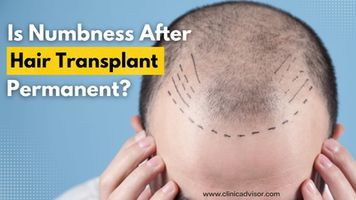
While hair transplants have long remained a dependable and enduring remedy for hair loss and baldness, recent years have witnessed a notable absence of groundbreaking advancements in the field. The fundamental principle of a hair transplant, irrespective of the technique employed, has always revolved around the extraction of hair grafts from a donor area and their meticulous implantation in areas experiencing hair loss. This approach has undeniably offered countless individuals worldwide a safe path to hair restoration, but it is not without its limitations. One glaring drawback is that the harvested hair does not regenerate, restricting the available reservoir of grafts for each person.
The intriguing question that looms on the horizon is: what holds the future of hair transplants? Could we conceivably harness hair grafts from alternative sources, perhaps even perfect the elusive art of hair cloning? In this exploration, we delve into the ongoing research efforts to seek answers to these questions and the potential innovations that may redefine the landscape of hair restoration.
1. Improved Techniques:
Hair transplant techniques, such as Follicular Unit Extraction (FUE) and Follicular Unit Transplantation (FUT), have become more advanced and less invasive. Future developments may continue to refine these techniques for better results and quicker recovery times.
2. Robotic and AI-Assisted Procedures:
Robotic hair transplant systems have been developed to assist surgeons in performing precise graft harvesting and transplantation. Artas is the dominant robotic hair transplantation today. However, AI may play a role in optimizing the design and planning of hair transplant procedures for more natural-looking results.
3. Follicle Banking:
Follicle banking, also known as hair follicle preservation or hair follicle cryopreservation, is an innovative technique in the field of hair restoration. This method involves the extraction, preservation, and storage of healthy hair follicles for future use. It offers several potential benefits and applications in the realm of hair transplantation.
Follicle banking involves carefully extracting healthy hair follicles from the donor area, typically located at the back of the scalp. These donor follicles are chosen for their health and quality to ensure they are effective for future transplantation. One of the most significant advantages of follicle banking is that it provides a personalized source of donor hair. The banked follicles come from the individual's own scalp, making them genetically matched and perfectly suited for future hair restoration procedures. This results in a more natural and seamless appearance.
Follicle banking can be especially valuable in cases of sudden hair loss due to trauma, medical treatments, or other unexpected events. Preserved hair follicles can be quickly used for emergency hair restoration, helping individuals regain their hair and confidence promptly.
Moreover, the preserved hair follicles serve as a valuable resource for ongoing research and developments in the field of hair restoration. They can be used to investigate new techniques, therapies, and treatments to improve the effectiveness and success rates of hair transplants.
4. Regenerative Medicine:
Stem cell therapy and platelet-rich plasma (PRP) treatments have shown promise in promoting hair regrowth. PRP is used currently to enforce hair transplant results or for patients not eligible for hair transplants. However, they have shown limited results so far and more research is needed on their effectiveness. These treatments may become more common in conjunction with hair transplant procedures to enhance results and stimulate the growth of existing hair.
5. Non-Surgical Alternatives:
Non-surgical hair restoration options like laser therapy, topical medications, and low-level laser therapy (LLLT) are becoming more popular. Future advancements in non-surgical approaches may provide additional options for individuals with mild to moderate hair loss.
6. Customized Solutions:
Personalized treatment plans may become more common, utilizing genetic and molecular data to tailor hair transplant procedures to an individual's specific needs and characteristics.
7. Enhanced Aesthetics:
Surgeons and researchers continue to work on improving the aesthetic outcomes of hair transplants, focusing on natural-looking hairlines and seamless integration with existing hair.
Conclusion:
These developments collectively reflect the evolving landscape of hair transplant procedures and hair restoration in general. The goal is to provide more effective, personalized, and natural-looking results while expanding the options available to individuals experiencing hair loss. Advances in technology, medical science, and personalized care are driving the future of this field.







Share Your Opinion, Please